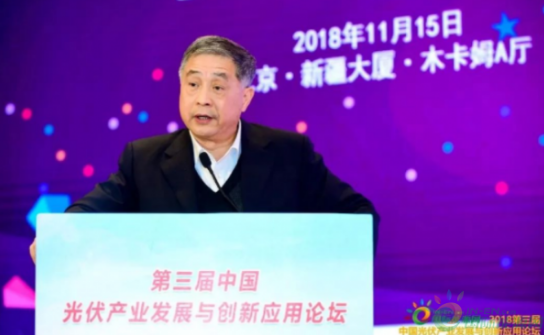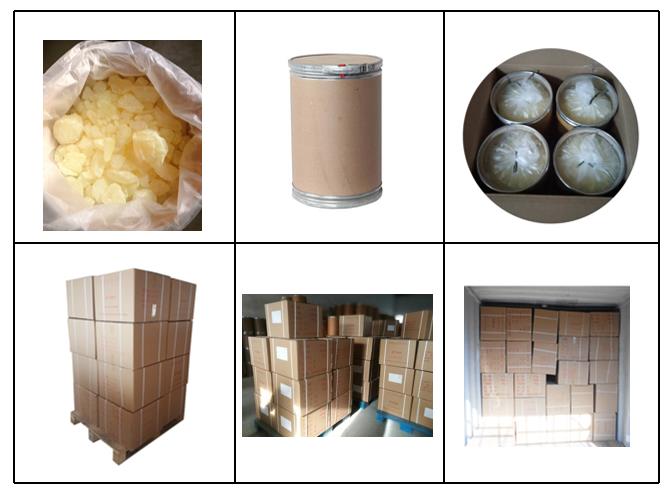On November 15, 2018, the 3rd China PV Industry Development and Innovation Application Forum was held in Beijing. The guests at the meeting deeply interpreted the latest PV industry policies, discussed the development trend of the industry, and shared the future development of the industry. In the situation report section of the forum, Wang Bohua, vice chairman and secretary general of China Photovoltaic Industry Association, conducted a comprehensive analysis of the future trends, policy trends and corporate countermeasures of the development of the photovoltaic industry. Wang Bohua believes that the future development of photovoltaics will be faster than expected, and the policy direction will further benefit PV, mainly to control the rhythm and promote industrial innovation and upgrading. Enterprises should base themselves on the global market and promote innovation and upgrading.

Household PV projects have a big impact
Wang Bohua introduced the four main links of the manufacturing end of the PV industry chain. Although it was not as high as last year in the first half of 2018, it was generally good. The growth rate of July-September declined, and the overall price remained 25%. Growth, it is expected that there will be negative growth in some sectors from October to December.
According to data released by the National Energy Administration, the PV-connected pre-installed aircraft from January to September was 34.5 GW, down from the same period last year. Among them, the centralized decline is more, close to 40%, and the distribution is still the growth trend. Last year, the distributed growth increased by 360% compared with the previous year, but this year's 9 months was only 12% higher than last year.
Wang Bohua said that before we used 80,000 sets of household PV in 2018, it seems that it may be much higher than this figure. Although the overall volume of household PV is not very large, there are many households and many units. The amount of involvement is very large, and the impact is very large. The people involved in thousands of households are basically disadvantaged groups. If it has a negative impact, it will form a very bad public opinion for the entire industry. Therefore, we should pay attention to the household area. Before that, we also reported the recommendations many times and looked forward to the introduction of more specific measures.
PV exports increased by nearly 20% in the first nine months of this year
In terms of import and export, the first nine months have maintained a growth of nearly 20%. Since the "double opposition" in Europe and the United States, after China and Europe engaged in price commitments, PV exports have fallen sharply. On the one hand, due to the existence of trade barriers, on the other hand, because of our constant price cuts, the volume has been increasing, resulting in exports. The decline is faster. It was not until 2017 that they began to achieve positive growth, with a growth rate of only 3.6%.
Judging from the monthly import and export situation, the average of the first nine months has improved compared with last year, and the import and export of wafers has experienced a rapid decline, especially after the 531 New Deal. The monthly average import volume of polysilicon is 12,000 tons. Its average price is also falling rapidly.
From the distribution of countries and regions where components are exported, the entire PV international market has developed a development trend of “spreading everywhere, the east is not bright in the westâ€, and this situation is growing. The trend of decentralization is increasing, and some traditional markets are declining. The most obvious of these is China's exports to the United States, which is related to the establishment of direct export of overseas bases by some PV backbone enterprises, but does not rule out some reasons for trade barriers.
For the future development, Wang Bohua expressed optimistic views, and we have good reason to establish confidence in the development of the photovoltaic industry.
2018-2030: Intensive phase of achieving PV installation targets in various countries
Wang Bohua said that from an international perspective, 146 countries have set clear targets for renewable energy development, especially in the last decade or so, many countries have set their targets at 2018-2030, renewable. The largest proportion of energy installed capacity is in the field of solar photovoltaic. Therefore, from this perspective, the macroscopic analysis has become a common plan for all countries in the world, and will be vigorously developed in the future.
Based on the global market, transforming the development model
At present, there is a turning point in the Chinese PV market. Recently, the analysis and forecast data of some institutions are also more optimistic. Wang Bohua believes that the large forecast range is still 35-45GW, and the forecast is still about 40GW. In the next three months, there are some unsubsidized projects that are difficult to predict. In the time we can foresee, China will still maintain the development trend of the world's first market. In other words, 40GW, 50GW or more in the future is very likely.
For the future development of photovoltaics, Wang Bohua summed up three points: First, we must continue to have confidence in the domestic market; second, our strategic goals must target the global market; third, the pace of development and development model must change, It is necessary to change from the past scale and speed to the improvement of quality and efficiency.
To be based on the global market, companies think much earlier than we think. According to relevant statistics, China's overseas production capacity of the battery has exceeded 11GW, and the component production capacity exceeds 15GW. In the first half of this year, it was 8.6GW and 12GW respectively. This has a lot to do with the “going out†development model advocated by the state and industry.
But in turn, we must also reflect on a problem. Some Southeast Asian countries have advantages over China in terms of financing, preferential policies, and labor costs. Will we develop into hollowness? We all know that photovoltaic production has a characteristic. The higher the cost and the more advanced the post-build, will not compete with the Chinese market. Because neither the financing cost nor the labor cost, China does not have an advantage over Southeast Asian countries.
Of course, Wang Bohua once again stressed that we should have confidence in the domestic market. The General Secretary held a private enterprise symposium. Premier Li also held a meeting on private enterprises. This is far more important for the photovoltaic industry than the traditional industries. About 90% of the top ten companies in the photovoltaic industry are private enterprises. There are not many private enterprises with absolute advantages. The macro policy trend has greatly promoted the general trend of our photovoltaic industry.
Policy direction: control the rhythm, promote industrial innovation and upgrade
The specific macro-policy trend, there may be some new measures to promote photovoltaics, but the general trend has not changed, it is necessary to put forward policies around the road to high-quality development. In terms of scale, we must control the pace of development and maintain the healthy development of the photovoltaic industry. On the manufacturing side, promote innovation and transformation and upgrading of the manufacturing side.
On the manufacturing side, there is a new change this year, which is to start the dynamic adjustment work in the substantive starting conditions, in other words, to strengthen the exit mechanism, and the level is not high to withdraw. In the development of smart PV, the six ministries and commissions issued an action plan for the development of the smart PV industry, which has been solidly promoted and implemented, including demonstration projects, application projects, green factories, green supply chains, and so on.
Looking into the future, the photovoltaic industry will enter a new stage of development, from extensive to refined development, to fight for scale, speed, and price, to transform into quality, technology, and efficiency. From relying on subsidies to gradually realizing the transition to affordable Internet access, the new policy will guide the development of the entire photovoltaic industry and accelerate adjustment.
At present, the new situation facing PV is also the case, including the domestic policy situation, market situation, other aspects of the industry and the international market situation, all of which are forcing enterprises to enter a new stage of development and adjust their development ideas. Through this round of development, the entire photovoltaic industry may be further strengthened after baptism, and will certainly usher in a new upsurge in the development of the entire industry.
Chemical Name: Musk Ambrette
Synonyms: Musk Natural; Natural Musk Ambrette; Ambrettolide; Ambrettolid; Ambrette Musk; 16-Hydroxy-7-hexadecenoic Acid Lactone; (Z)-Oxacycloheptadec-8-en-2-one; (8Z)-Oxacycloheptadec-8-en-2-one;
CAS Number: 123-69-3
Molecular Formula: Câ‚₆H₂₈Oâ‚‚
Molecular Weight: 252.39

Musk Ambrette Chunks ,Wild Musk Oil,Real Musk Oil,Tonkin Musk
Gan Su Original Flavor Co.,ltd , https://www.muskxylol.nl